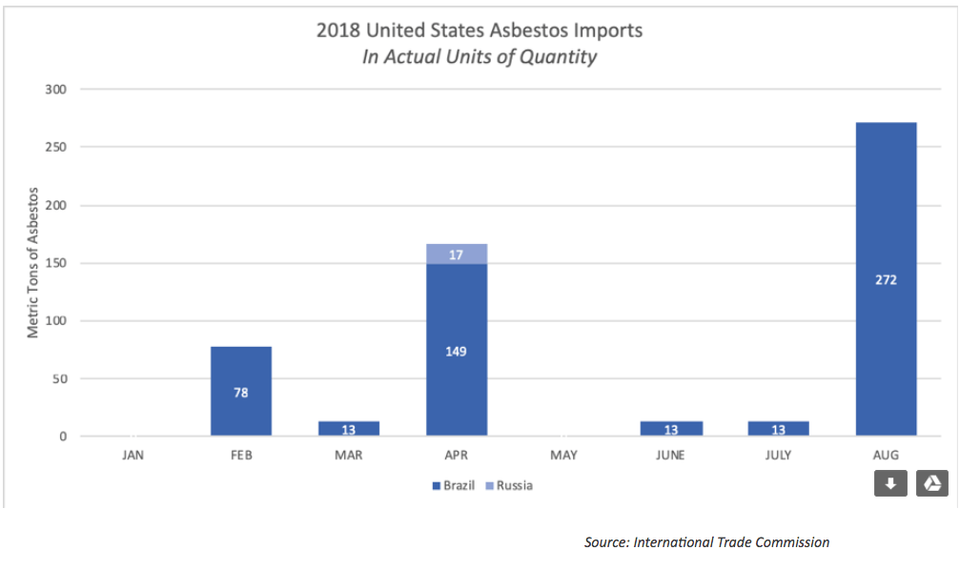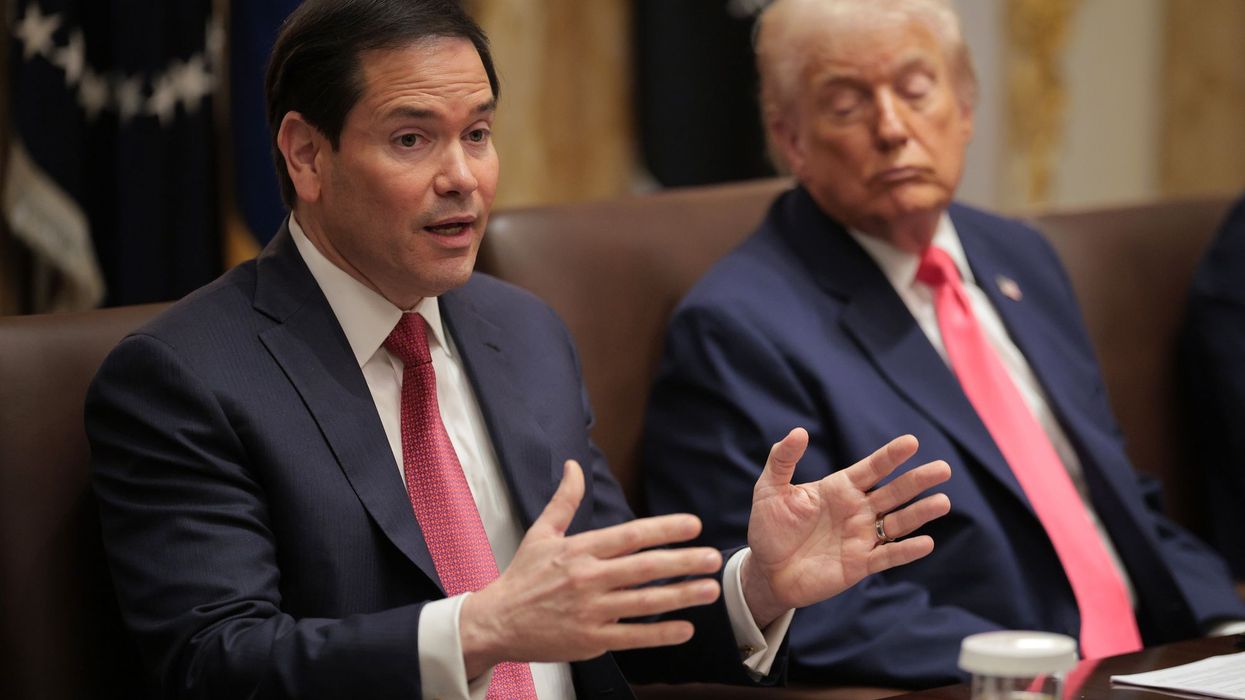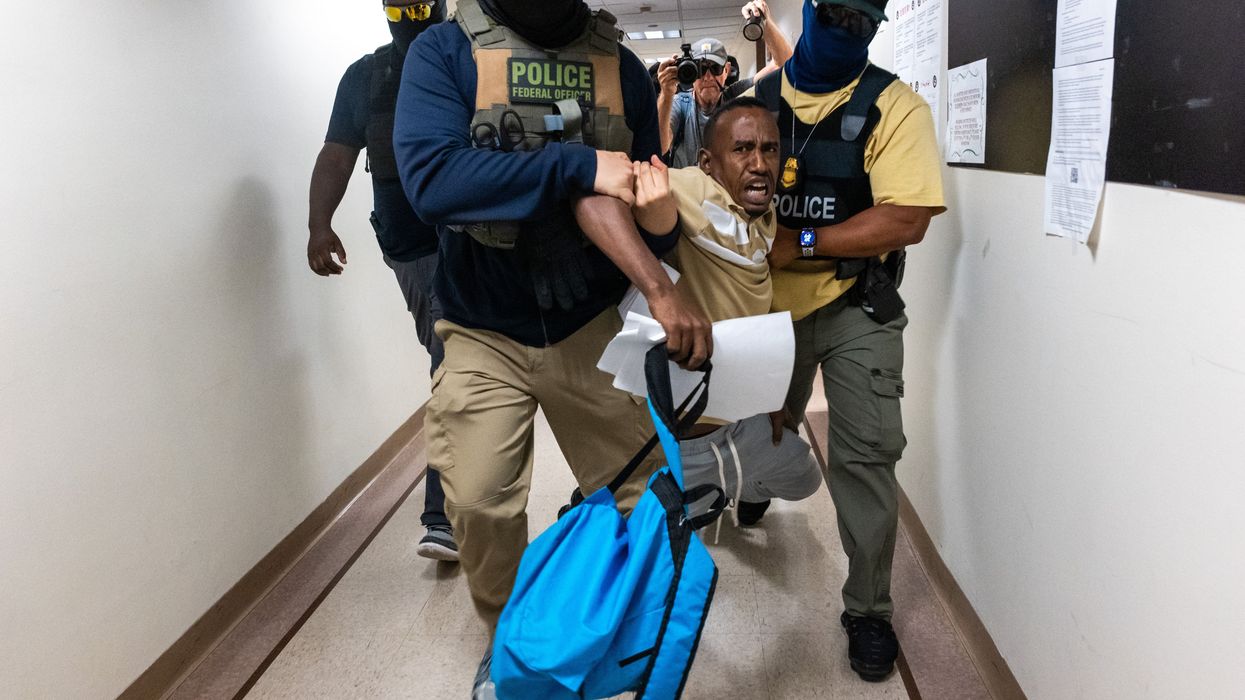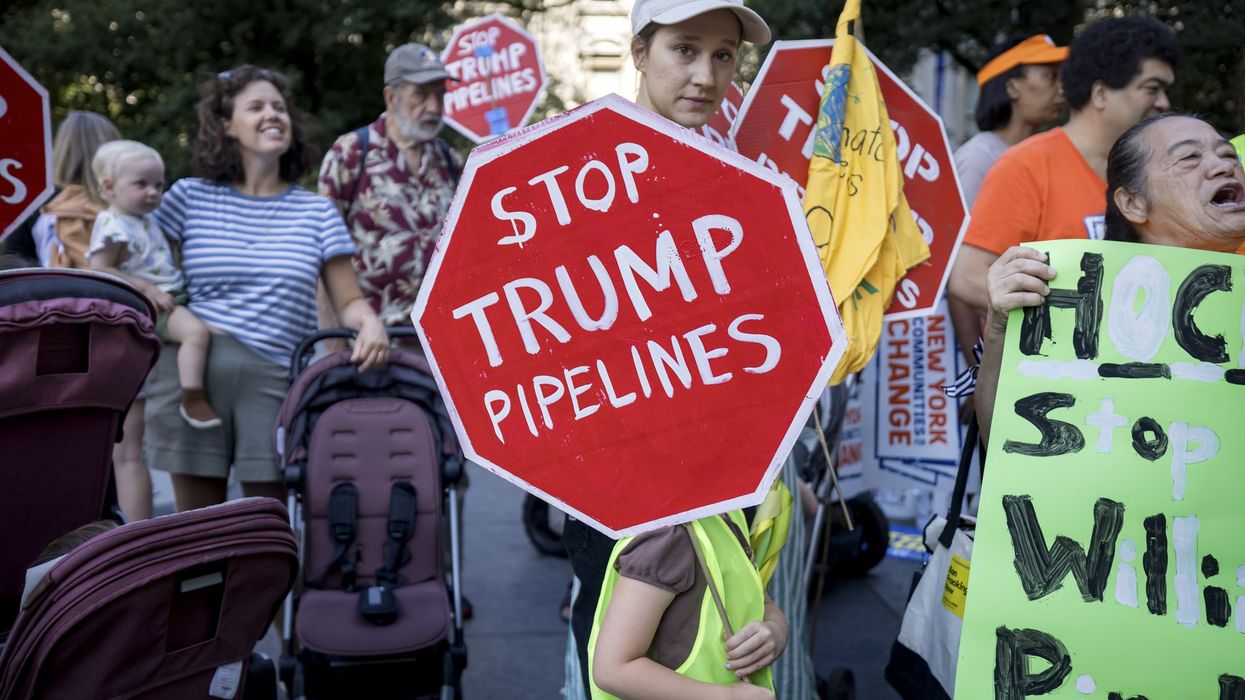October, 23 2018, 12:00am EDT

For Immediate Release
Contact:
Alex Formuzis
Senior VP, Communications & Strategic Campaigns
Environmental Working Group (EWG)
1436 U Street, NW
Suite 100
Washington, D.C. 20009
202.667.6982
@AlexFormuzis
Asbestos Imports Surge as Trump White House Moves to Keep Deadly Carcinogen Legal
New government data: asbestos imports rise 2,000 percent between July and August
WASHINGTON
Asbestos imports to the U.S. soared by nearly 2,000 percent between July and August, according to federal import data analyzed by the Asbestos Disease Awareness Organization (ADAO) and Environmental Working Group.
According to the U.S. International Trade Commission and the Department of Commerce, in August alone, the U.S. imported 272 metric tons of asbestos, compared to 13 metric tons in July.
The striking increase is a major indicator that industry is not concerned about President Trump and the Environmental Protection Agency (EPA) taking any steps to ban or even reduce the use and import of asbestos.
As the U.S. Geological Survey reported, the only remaining user of raw asbestos in the U.S. is the chlor-alkali industry, which uses it to make semipermeable asbestos diaphragms needed in the manufacturing of chlorine and sodium chloride.
The EPA was given new powers to ban and restrict dangerous substances like asbestos when Congress passed legislation in 2016 overhauling the federal Toxic Substances Control Act, or TSCA.
Asbestos is one of the first 10 substances the EPA is assessing for safety following the updates made to the revamped chemicals law. Although the EPA has not yet made a decision about the safety of asbestos under the new TSCA, recent actions by the Trump administration lay the groundwork for the agency to find that asbestos is safe and should remain legal.
Last week, the White House released its Fall 2018 deregulatory agenda, further indicating that Trump's EPA, under acting Administrator Andrew Wheeler, has no plans to implement a ban of asbestos.
The last asbestos mine in the U.S. closed in 2002, forcing the chlor-alkali industry and other users to rely on imports.
In 2017, all of the asbestos imported into and used in the U.S. came from Brazil.Between January and August of this year, the industry spent nearly $1 million to import 555 metric tons of asbestos from Brazil and Russia. Last year, the U.S. imported more than 341 metric tons of asbestos, and 2018 imports are expected to double.

Lobbyists from the American Chemistry Council, working on behalf of the chlor-alkali industry, are now pushing the Trump administration for an exemption from the new chemical safety law that would allow it to continue to import and use asbestos just as it does today.
Analysis of federal data from the Centers for Disease Control and Prevention suggests that asbestos-triggered diseases kill an estimated 15,000 Americans a year. A recent study led by Jukka Takala, president of the International Commission on Occupational Health, found that the death toll from asbestos exposure may be much higher, at nearly 40,000 Americans a year and more than 255,000 a year worldwide.
"It is clear that under the Trump administration, U.S. asbestos imports and use are not decreasing. The science is irrefutable, there is no safe level of asbestos exposure or controlled use. Clearly, the chlor-alkali industry is lobbying for another exemption." said Linda Reinstein, president and co-founder of the Asbestos Disease Awareness Organization.
"It is appalling that unlike more than 60 nations around the world, the U.S. not only fails to ban asbestos, but allows imports to increase," Reinstein said. "Americans cannot identify or manage the risks of asbestos. The time is now for the EPA to say no to the asbestos industry and finally ban asbestos without exemptions."
"If virtually anyone other than Donald Trump were president, EPA would be following the law and moving to ban asbestos to protect public health," said EWG President Ken Cook. "When most people learn that asbestos remains legal even after it's claimed the lives of countless Americans, they're shocked. And when the public finds out the Trump administration is actively working to keep it legal, they are furious."
Earlier this year, ADAO and EWG discovered that Russia's largest asbestos producer, with close ties to Vladimir Putin, is wrapping its products in packaging adorned with President Trump's image. The company posted on Facebook a photo of pallets of asbestos with this caption:
Donald is on our side! ... He supported the head of the United States Environmental Protection Agency, Scott Pruitt, who stated that his agency would no longer deal with negative effects potentially derived from products containing asbestos. Donald Trump supported a specialist and called asbestos "100% safe after application."
According to the U.S. Geological Survey, in 2016, roughly 95 percent of the asbestos imported into the U.S. came from Brazil, with the rest coming from Russia.
But in November 2017, Brazil joined more than 60 other nations and banned asbestos. Brazil's ban, which will be in full effect soon, leaves Russia, Kazakhstan and China as the world's dominant asbestos producers. With Brazil poised to no longer provide the vast majority of asbestos to the U.S., Russia and Kazakhstan could fill the void.
The Environmental Working Group is a community 30 million strong, working to protect our environmental health by changing industry standards.
(202) 667-6982LATEST NEWS
ICC Slams New US Sanctions on Judges as 'Flagrant Attack' on Rule of Law
"When judicial actors are threatened for applying the law, it is the international legal order itself that is placed at risk," the court said.
Dec 18, 2025
The International Criminal Court and human rights groups on Thursday condemned new US sanctions on two more of the tribunal's judges, which brought the total number of sanctioned ICC jurists to 11 amid the Trump administration's escalating campaign of retaliation against people and institutions seeking to hold Israel and the United States accountable for their alleged crimes.
"Today, I am designating two International Criminal Court (ICC) judges, Gocha Lordkipanidze of Georgia and Erdenebalsuren Damdin of Mongolia, pursuant to Executive Order 14203, 'Imposing Sanctions on the International Criminal Court,'" US Secretary of State Marco Rubio said in a statement, referring to President Donald Trump's February edict.
"These individuals have directly engaged in efforts by the ICC to investigate, arrest, detain, or prosecute Israeli nationals, without Israel’s consent, including voting with the majority in favor of the ICC’s ruling against Israel’s appeal on December 15," Rubio added, referencing Monday's rejection of an Israeli bid to block a probe into alleged war crimes committed during the genocidal two-year war on Gaza.
Although Israel and the US are not ICC members and do not recognize the Hague-based tribunal's jurisdiction, Palestine is a state party to the Rome Statute governing the court. The treaty says that individuals from nonsignatory nations can be held liable for crimes committed in the territory of a member state.
Last year, the ICC issued warrants for the arrest of Israeli Prime Minister Benjamin Netanyahu and former Israeli Defense Minister Yoav Gallant for alleged crimes against humanity and war crimes in Gaza, including murder and forced starvation in a war that has left more than 250,000 Palestinians dead, wounded, or missing.
The Trump administration had previously sanctioned nine other ICC jurists: Chief Prosecutor Karim Khan (United Kingdom), Deputy Prosecutor Nazhat Shameem Khan (Fiji), Deputy Prosecutor Mame Mandiaye Niang (Senegal), Judge Solomy Balungi Bossa (Uganda), Judge Luz del Carmen Ibáñez Carranza (Peru), Judge Reine Adelaide Sophie Alapini-Gansou (Benin), Judge Beti Hohler (Slovenia), Judge Nicolas Yann Guillou (France), and Judge Kimberly Prost (Canada).
The affected judges have recently described how the US sanctions have left them and their families—who are also blacklisted—"wiped out economically and socially."
Responding to the new US punitive measures, the ICC said Thursday that "these sanctions are a flagrant attack against the independence of an impartial judicial institution which operates pursuant to the mandate conferred by its states parties from across regions."
"Such measures targeting judges and prosecutors who were elected by the states parties undermine the rule of law," the court continued. "When judicial actors are threatened for applying the law, it is the international legal order itself that is placed at risk."
"As previously stated, the court stands firmly behind its personnel and behind victims of unimaginable atrocities," the ICC added. "It will continue to carry out its mandate with independence and impartiality, in full accordance with the Rome Statute and in the interest of victims of international crimes."
Human Rights Watch also slammed the new US sanctions, which the group called "the latest attempt by the Trump administration to blatantly interfere with independent justice."
The US government has imposed sanctions on two additional ICC judges in order to shield Israeli officials from charges of grave international crimes.These sanctions are the latest attempt by the Trump administration to blatantly interfere with independent justice.
[image or embed]
— Human Rights Watch (@hrw.org) December 18, 2025 at 12:01 PM
Amnesty International's Center for International Justice lamented that "once again, the US administration is attacking international justice—sanctioning two ICC judges. This cannot be normalized."
"States must firmly oppose US threats and sanctions and uphold the court’s ability to pursue accountability," the group added, "even against the most powerful perpetrators."Keep ReadingShow Less
Rights Group Condemns 'Terror' and 'Lawlessness' Spread by Trump's Masked Thugs
“Allowing masked, unidentified agents to roam communities and apprehend people without identifying themselves erodes trusts in the rule of law and creates a dangerous vacuum where abuses can flourish."
Dec 18, 2025
As masked government agents—an oft-employed terror tool of authoritarian regimes—run roughshod amid the Trump administration's mass deportation effort, a leading human rights group on Thursday called on Congress to investigate abuses perpetrated by federal officers against immigrants and US citizens alike.
Federal immigration enforcement agents "now commonly operate masked and without visible identification, compounding the abusive and unaccountable nature of the Trump administration’s mass deportation campaign," Human Rights Watch (HRW) said. "The indefinite and widespread nature of these practices is fundamentally inconsistent with the United States’ obligations to ensure that law enforcement abuses are investigated and met with accountability."
HRW continued:
Since President Donald Trump’s return to office in January 2025, his administration has carried out an abusive campaign of immigration raids and arrests, primarily of people of color, across the country. Many of the raids target places where Latino people work, shop, eat, and live. The agents have seized people in courthouses and at regularly scheduled appointments with immigration officials, as well as in places of worship, schools, and other sensitive locations. Many raids have been marked by the sudden and unprovoked use of force without any justification, creating a climate of fear in many immigrant communities.
Drawing upon interviews with 18 people who were arrested or witnessed arrests by unidentified federal agents, HRW highlighted the "terror" and helplessness felt by victims of such "lawlessness."
“It was a horrible feeling,” said Rümeysa Öztürk, a Turkish PhD student at Tufts University who was illegally snatched off a Massachusetts street in March and whisked off to an US Immigration and Customs Enforcement (ICE) lockup in Louisiana after she published an opinion piece in a student newspaper advocating divestment from apartheid Israel as it waged a genocidal war on Gaza. With Öztürk having committed no crime, a federal judge ordered her release 45 days later.
“I didn’t think that they were the police because I had never seen police approach and take someone away like this," Öztürk said of her arrest—which bystanders likened to a kidnapping. "I thought they were people who were doxing me, and I was genuinely very afraid for my safety... As a woman who’s traveled and lived alone in various countries for my studies, I’ve never experienced intense fear for my safety—until that moment.”
Operatives with ICE—part of the Department of Homeland Security (DHS)—and other agencies have violently attacked not only unauthorized immigrants but also members of their communities including US citizens, activists, journalists, and others. The agents are often wearing masks but not badges or other identifiers, making it very difficult to hold abusers accountable.
While ICE tries to justify its widespread practice of masking agents “to prevent doxing,” HRW stressed that "this kind of generalized, blanket justification for concealing officers’ identity is not compatible with US human rights obligations, except when necessary and proportionate to address particular safety concerns."
"Anonymity also weakens deterrence, fosters conditions for impunity, and chills the exercise of rights," the group added.
It also sows terror, as Republican-appointed US District Judge William Young noted in a ruling earlier this year: "ICE goes masked for a single reason—to terrorize Americans into quiescence. Small wonder ICE often seems to need our respected military to guard them as they go about implementing our immigration laws. It should be noted that our troops do not ordinarily wear masks. Can you imagine a masked marine? It is a matter of honor—and honor still matters."
HRW also noted that "in recent months, media outlets have reported on people posing as federal agents kidnapping, sexually assaulting, and extorting victims, exploiting fears of immigration enforcement."
“Allowing masked, unidentified agents to roam communities and apprehend people without identifying themselves erodes trusts in the rule of law and creates a dangerous vacuum where abuses can flourish, exacerbating the unnecessary violence and brutality of the arrests,” HRW associate crisis and conflict director Belkis Wille said in a statement Thursday.
HRW called on Congress to "investigate the brutality of the ongoing immigration enforcement activities, including the specific impacts of unidentifiable agents carrying out stops and arrests on impeding investigations and accountability efforts."
In addition to efforts by state legislatures to unmask federal agents, congressional Democrats have demanded ICE and other officers identify themselves, and have introduced legislation—the No Secret Police Act and No Masks for ICE Act in the House and VISIBLE Act in the Senate—that would compel them to do so.
“If you uphold the peace of a democratic society, you should not be anonymous,” No Secret Police Act lead co-sponsor Rep. Adriano Espaillat (D-NY) said at the time of the bill's introduction in June. “DHS and ICE agents wearing masks and hiding identification echoes the tactics of secret police authoritarian regimes—and deviates from the practices of local law enforcement, which contributes to confusion in communities.”
Keep ReadingShow Less
11 House Democrats Help GOP Pass 'Disastrous' Pro-Polluter Permitting Bill
"The SPEED Act protects corporate interests, not the public, and it should be rejected by any senator who claims to stand with the people," said one campaigner.
Dec 18, 2025
Eleven Democrats on Thursday voted with nearly all Republicans in the US House of Representatives to advance a permitting reform bill that climate and frontline organizations warn is a "disastrous" attack on a landmark environmental protection law.
Democratic Reps. Jim Costa (Calif.), Henry Cuellar (Texas), Don Davis (NC), Chris Deluzio (Pa.), Lizzie Fletcher (Texas), Jared Golden (Maine), Vicente Gonzalez (Texas), Adam Gray (Calif.), John Mannion (NY), Marie Gluesenkamp Perez (Wash.), and Marc Veasey (Texas) voted with all Republicans present expect Rep. Brian Fitzpatrick (Pa.) to pass the bill.
The Standardizing Permitting and Expediting Economic Development (SPEED) Act, spearheaded by Golden and House Committee on Natural Resources Chair Bruce Westerman (R-Ark.), would amend the National Environmental Policy Act (NEPA), which "is often called the 'Magna Carta' of federal environmental laws."
In a statement after the vote, Food & Water Watch legal director Tarah Heinzen said that "for decades, NEPA has ensured logical decision-making and community involvement when the federal government considers projects that could harm people and the environment. The SPEED Act would eviscerate NEPA's protections."
The group detailed key ways in which the SPEED Act attacks NEPA:
- Drastically limiting NEPA's scope of review: Removes many actions from NEPA review altogether, potentially allowing factory farms and coal plants to build and expand without any environmental review or public input;
- Limiting agency accountability: Creates unreasonably short deadlines to challenge inadequate reviews, and limits courts’ ability to stop unlawful projects; and
- Putting polluter profits above science and the environment: Turns NEPA on its head by requiring agencies to prioritize corporate interests over the public interest and limiting their ability to consider the best science.
"Today's absurd House vote is yet another handout to corporate polluters at the expense of everyday people who have to live with the real-world impacts of toxic pollution from dirty industries like fossil fuels and factory farms," Heinzen argued. "This nonsense must be dead on arrival in the Senate."
Other campaigners also looked to the upper chamber after the vote. Erik Schlenker-Goodrich, executive director of the Western Environmental Law Center, said that "renewable energy and climate advocates in the Senate must hold the line against the SPEED Act's evisceration of our bedrock environmental and community protection law."
Allie Rosenbluth, Oil Change International's US campaign manager, stressed that "our senators must stand up against the SPEED Act's attempts to undermine democratic decision-making, pollute our communities, and threaten our collective future."
For a Better Bayou's James Hiatt similarly said that "the SPEED Act protects corporate interests, not the public, and it should be rejected by any senator who claims to stand with the people."
Anthony Karefa Rogers-Wright, co-coordinator of Black Alliance for Peace's Climate, Environment, and Militarism Initiative, warned that the bill "represents yet another assault on the health of frontline, Black, Brown, Indigenous, and poor white communities that have been designated as sacrifice zones by big polluters who bribe lawmakers with big money to continue a culture of extract, slash, burn, and emit at the expense of oppressed and marginalized peoples."
"Rather than speeding up the approval of dirty projects, Congress should increase funding for federal agencies and grassroots organizations accountable to frontline communities to carry out legally defensible and accurate environmental analyses," he continued, pointing to the Environmental Justice for All Act, previously led by the late Democratic Congressmen Raúl Grijalva (Ariz.) and Donald McEachin (Va.).
Mar Zepeda Salazar, legislative director at Climate Justice Alliance, also pointed to that alternative: "The SPEED Act fast-tracks harmful fossil fuel and polluting projects, not the community-led clean energy solutions families and Indigenous peoples across the country have long called for. Instead of pushing the SPEED Act—a bill that would strip away what few legal protections communities still have, weaken safeguards for clean air, land, and water near new industrial development, and sidestep meaningful consultation with federally recognized tribal nations—Congress should be advancing real, community-driven permitting reform."
"Examples include the Environmental Justice for All Act, which lays out meaningful public engagement, strong public health protections, respect for tribal sovereignty and consultation obligations, and serious investments in agencies and staff," she said.
Representatives from the Institute for Policy Studies, Sacred Places Institute for Indigenous Peoples, and Unitarian Universalists for Social Justice also spoke out against what David Watkins, director of government affairs for the Climate and Energy Program at the Union of Concerned Scientists, condemned as "a sizable holiday gift basket for Big Oil and Gas." He, too, urged the Senate to "reject this retrograde legislation and stand up to the deep-pocketed, polluting industries lobbying for it."
Lauren Pagel, policy director at Earthworks, pointed out that passing the SPEED Act wasn't the only way in which the House on Thursday "chose corporate interests over people, Indigenous Peoples' rights, and our environment." It also passed the Mining Regulatory Clarity Act, which "will remove already-scarce protections for natural resources and sacred cultural sites in US mining law."
"Today's House votes are a step backwards for our nation, but we continue to stand firm for the rights of the people and places on the frontlines of oil, gas, and mining," Pagel said. "Communities and ecosystems shouldn't pay the price while corporations rush to profit off extraction—with a helping hand from our elected officials."
Along with those two pieces of legislation, Public Citizen pointed to the House's approval of the Power Plant Reliability Act and Reliable Power Act earlier this week. David Arkush, director of the consumer advocacy group's Climate Program, said that the bills advancing through Congress "under the guise of 'bipartisan permitting reform' are blatant handouts to the fossil fuel and mining industries."
"We need real action to lower energy bills for American families and combat the climate crisis," Arkush asserted, calling on congressional Republicans and President Donald Trump "to fast-track a buildout of renewable energy, storage, and transmission—an approach that would not just make energy more affordable and sustainable, but create US jobs and bolster competitiveness with China, which is rapidly outpacing the US on the energy technologies of the future."
Keep ReadingShow Less
Most Popular


